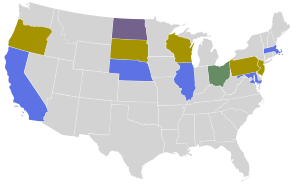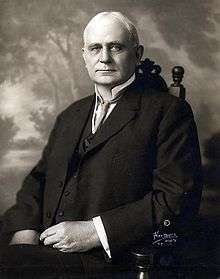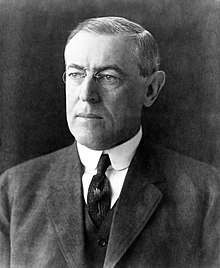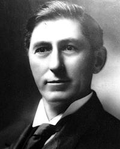1912 Democratic Party presidential primaries
The 1912 Democratic presidential primaries were the selection process by which voters of the Democratic Party chose its nominee for President of the United States in the 1912 U.S. presidential election.[1] New Jersey Governor Woodrow Wilson was selected as the nominee through a series of primary elections and caucuses culminating in the 1912 Democratic National Convention held from June 25 to July 2, 1912, in Baltimore, Maryland.
| |||||||||||||||||||||||||||||||||||||||||
| |||||||||||||||||||||||||||||||||||||||||
 | |||||||||||||||||||||||||||||||||||||||||
| |||||||||||||||||||||||||||||||||||||||||
Campaign
The race was primarily a contest between Woodrow Wilson and Champ Clark. John Burke and Judson Harmon also ran, but they were favorite sons with little appeal outside their home states.
Candidates
Nominee
Withdrew During Convention


Governor
Judson Harmon
of Ohio
Withdrew During Primaries
Results
| State | Date | Woodrow Wilson | Champ Clark | Judson Harmon | John Burke |
|---|---|---|---|---|---|
| North Dakota | March 19 | 0.0% | 0.0% | 0.0% | 100.0% |
| Wisconsin | April 2 | 55.7% | 44.2% | 0.0% | 0.0% |
| Illinois | April 9 | 25.7% | 74.3% | 0.0% | 0.0% |
| Pennsylvania | April 13 | 100.0% | 0.0% | 0.0% | 0.0% |
| Nebraska | April 19 | 27.9% | 41.0% | 24.3% | 0.0% |
| Oregon | April 19 | 53.0% | 43.4% | 3.3% | 0.0% |
| Massachusetts | April 30 | 29.9% | 68.9% | 0.0% | 0.0% |
| Maryland | May 6 | 34.3% | 54.4% | 11.3% | 0.0% |
| California | May 14 | 28.5% | 71.5% | 0.0% | 0.0% |
| Ohio | May 21 | 45.7% | 1.3% | 51.7% | 0.0% |
| New Jersey | May 28 | 98.9% | 1.1% | 0.0% | 0.0% |
| South Dakota | June 4 | 35.2% | 32.0%[notes 1] | 0.0% | 0.0% |
| Legend: | 1st place (popular vote) |
2nd place (popular vote) |
3rd place (popular vote) |
|---|
gollark: USB-C sounds good, but there are so many incompatible things running over one cable.
gollark: DisplayPort actually is neat, but USB-C...
gollark: Lack of knowledge of anything about safety?
gollark: It's weird how no other consumer standards are optical.
gollark: "Optical audio" is TOSLINK, which is actually digital.
See also
- Republican Party presidential primaries, 1912
Notes
- The pro-Clark vote was split between two slates of delegates. The first one, labeled "Wilson-Clark-Bryan" received 32% while the second one, labeled "Champ Clark" received 20%. Clark's people accused the latter slate of being a scheme to split the vote. Only the votes received by the Wilson-Clark-Bryan slate are included in this total.
References
- "Guide to U.S. Elections - Google Books". Books.google.com. 2016-02-19. Retrieved 2016-02-19.
This article is issued from Wikipedia. The text is licensed under Creative Commons - Attribution - Sharealike. Additional terms may apply for the media files.

